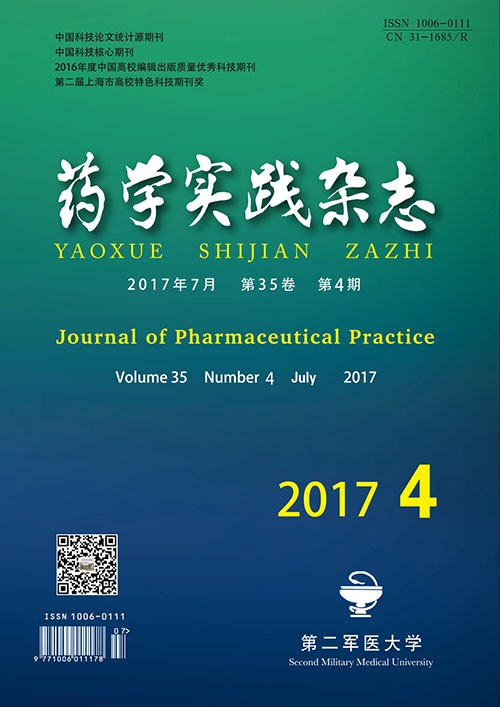|
[1]
|
赵金霞,刘湘源.TNF-α拮抗剂治疗类风湿关节炎疗效预测指标的研究进展[J].中华临床医师杂志, 2010, 4(4):447-449. |
|
[2]
|
Cross M, Smith E, Hoy D, et al. The global burden of hip and knee osteoarthritis: estimates from the global burden of disease 2010 study[J]. Ann Rheum Dis, 2014, 73(7): 1323-1330. |
|
[3]
|
Clement SL, Scheckel C, Stoecklin G, et al. Phosphorylation of tristetraprolin by MK2 impairs AU-rich element mRNA decay by preventing deadenylase recruitment[J]. Mol Cell Biol, 2011, 31(2): 256-266. |
|
[4]
|
江海龙, 王宁远, 陆一鸣. 肿瘤坏死因子受体选择性拮抗剂的研究进展[J]. 药学实践杂志, 2015, 33(5): 392-395. |
|
[5]
|
McDermott MF, Aksentijevich I, Galon J, et al. Germline mutations in the extracellular domains of the 55 kDa TNF receptor, TNFR1, define a family of dominantly inherited autoinflammatory syndromes[J]. Cell, 1999, 97(1): 133-144. |
|
[6]
|
Xanthoulea S, Pasparakis M, Kousteni S, et al. Tumor necrosis factor (TNF) receptor shedding controls thresholds of innate immune activation that balance opposing TNF functions in infectious and inflammatory diseases[J]. J Exp Med, 2004, 200(3): 367-376. |
|
[7]
|
Grell M, Douni E, Wajant H, et al. The transmembrane form of tumor necrosis factor is the prime activating ligand of the 80 kDa tumor necrosis factor receptor[J]. Cell, 1995, 83(5): 793-802. |
|
[8]
|
Chan FK, Chun HJ, Zheng L, et al. A domain in TNF receptors that mediates ligand-independent receptor assembly and signaling[J]. Science, 2000, 288(5475): 2351-2354. |
|
[9]
|
Micheau O, Tschopp J. Induction of TNF receptor I-mediated apoptosis via two sequential signaling complexes[J]. Cell, 2003, 114(2): 181-190. |
|
[10]
|
Fotin-Mleczek M, Henkler F, Samel D, et al. Apoptotic crosstalk of TNF receptors: TNF-R2-induces depletion of TRAF2 and IAP proteins and accelerates TNF-R1-dependent activation of caspase-8[J]. J Cell Sci, 2002, 115(13): 2757-2770. |
|
[11]
|
Woo YJ, Yoon B Y, Jhun JY, et al. Regulation of B cell activating factor (BAFF) receptor expression by NF-κB signaling in rheumatoid arthritis B cells[J]. Exp Mol Med, 2011, 43(6): 350-357. |
|
[12]
|
王 宁, 邢丽华.NF-κB圈套寡脱氧核苷酸技术联合紫杉醇对肺癌血管生成的影响[J].广东医学, 2011, 32 (1): 29-31. |
|
[13]
|
Volanti C, Hendrickx N, Van Lint J, et al. Distinct transduction mechanisms of cyclooxygenase 2 gene activation in tumour cells after photodynamic therapy[J]. Oncogene, 2005, 24(18): 2981-2991. |
|
[14]
|
Bertolini DR, Nedwin GE, Bringman TS, et al. Stimulation of bone resorption and inhibition of bone formation in vitro by human tumour necrosis factors[J]. Nature, 1986, 319(6053): 516-518. |
|
[15]
|
Arntz OJ, Geurts J, Veenbergen S, et al. A crucial role for tumor necrosis factor receptor 1 in synovial lining cells and the reticuloendothelial system in mediating experimental arthritis[J]. Arthritis Res Ther, 2010, 12(2): R61. |
|
[16]
|
Mori L, Iselin S, De Libero G, et al. Attenuation of collagen-induced arthritis in 55-kDa TNF receptor type 1 (TNFR1)-IgG1-treated and TNFR1-deficient mice[J]. J Immunol, 1996, 157(7): 3178-3182. |
|
[17]
|
Kontoyiannis D, Pasparakis M, Pizarro TT, et al. Impaired on/off regulation of TNF biosynthesis in mice lacking TNF AU-rich elements: implications for joint and gut-associated immunopathologies[J]. Immunity, 1999, 10(3): 387-398. |
|
[18]
|
Blüml S, Scheinecker C, Smolen JS, et al. Targeting TNF receptors in rheumatoid arthritis[J]. Int Immunol, 2012, 24(5): 275-281. |
|
[19]
|
Donahue KE,Gartlehner G,Jonas DE,et al. Systematic review: comparative effectiveness and harms of disease-modifying medications for rheumatoid arthritis[J]. Ann Intern Med, 2008,148(2):124-134. |
|
[20]
|
Van Hauwermeiren F, Vandenbroucke RE, Libert C. Treatment of TNF mediated diseases by selective inhibition of soluble TNF or TNFR1[J]. Cytokine Growth Factor Rev, 2011, 22(5-6): 311-319. |
|
[21]
|
Gomez-Reino JJ, Carmona L, Valverde VR, et al. Treatment of rheumatoid arthritis with tumor necrosis factor inhibitors may predispose to significant increase in tuberculosis risk: a multicenter active-surveillance report[J]. Arthritis Rheum, 2003, 48(8):2122-2127. |
|
[22]
|
Tang W, Lu Y, Tian QY, et al. The growth factor progranulin binds to TNF receptors and is therapeutic against inflammatory arthritis in mice[J]. Science, 2011, 332(6028): 478-484. |
|
[23]
|
Smitten AL, Simon TA, Hochberg MC, et al. A meta-analysis of the incidence of malignancy in adult patients with rheumatoid arthritis[J].Arthritis Res Ther, 2008, 10(2): R45. |
|
[24]
|
Abásolo L, Júdez E, Descalzo M, et al. Cancer in rheumatoid arthritis: occurrence, mortality, and associated factors in a South European population[J]. Semin Arthritis Rheum, 2008, 37(6): 388-397. |
|
[25]
|
Askling J, Fored CM, Brandt L, et al. Risks of solid cancers in patients with rheumatoid arthritis and after treatment with tumour necrosis factor antagonists[J]. Ann Rheum Dis, 2005, 64(10): 1421-1426. |
|
[26]
|
Shibata H, Yoshioka Y, Abe Y, et al. The treatment of established murine collagen-induced arthritis with a TNFR1-selective antagonistic mutant TNF[J]. Biomaterials, 2009, 30(34): 6638-6647. |
|
[27]
|
McCann FE, Perocheau DP, Ruspi G, et al. Selective tumor necrosis factor receptor I blockade is antiinflammatory and reveals immunoregulatory role of tumor necrosis factor receptor Ⅱ in collagen-induced arthritis[J]. Arthritis Rheum, 2014, 66(10): 2728-2738. |
|
[28]
|
Kruppa G, Thoma B, Machleidt T, et al. Inhibition of tumor necrosis factor (TNF)-mediated NF-kappa B activation by selective blockade of the human 55-kDa TNF receptor[J]. J Immunol,1992, 148(10): 3152-3157. |
|
[29]
|
Moosmayer D, Dübel S, Brocks B, et al. A single-chain TNF receptor antagonist is an effective inhibitor of TNF mediated cytotoxicity[J].Ther Immunol, 1995, 2(1): 31-40. |
|
[30]
|
Saito H, Kojima T, Takahashi M, et al. A tumor necrosis factor receptor loop peptide mimic inhibits bone destruction to the same extent as anti-tumor necrosis factor monoclonal antibody in murine collagen-induced arthritis[J]. Arthritis Rheum, 2007, 56(4): 1164-1174. |







 DownLoad:
DownLoad: